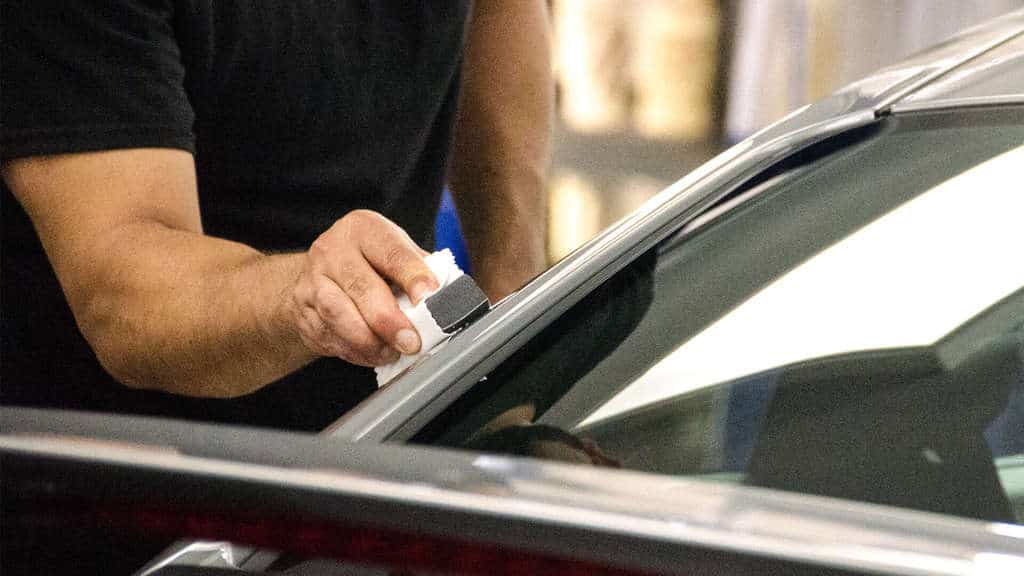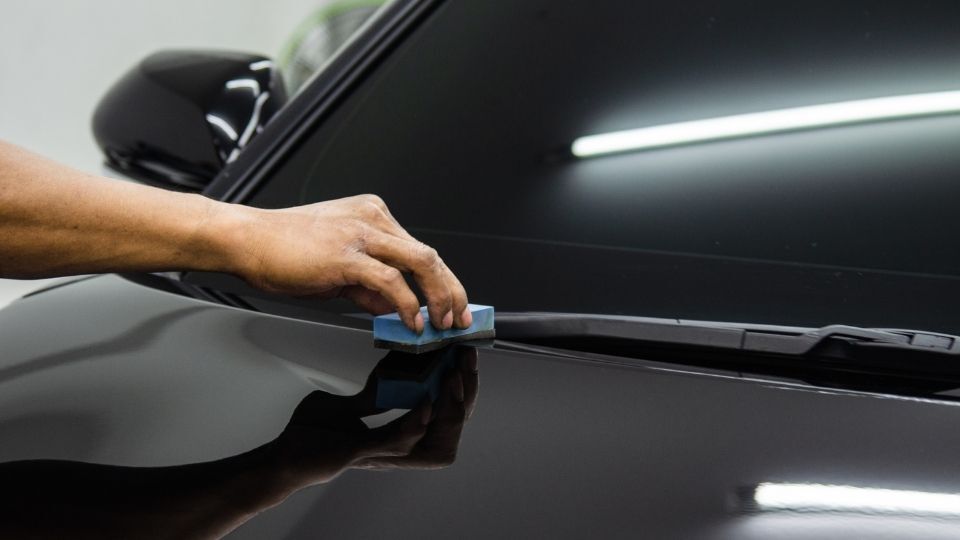Ceramic Coating: The Future of Automotive Surface Protection
Ceramic Coating: The Future of Automotive Surface Protection
Blog Article
Ceramic Finishing vs. Typical Wax: Which Offers Much Better Long-Term Defense?
The argument between ceramic coatings and traditional wax for lorry security has amassed considerable attention amongst auto lovers and professionals alike. Ceramic coatings flaunt exceptional longevity and resistance to ecological aspects, yet the complexity of their application elevates concerns about access and functionality.
Introduction of Ceramic Finishing
Ceramic coating has actually acquired significant appeal among auto lovers and detailers alike due to its sophisticated safety high qualities. This cutting-edge innovation is designed to produce a durable, hydrophobic shield over a lorry's paint surface, dramatically enhancing its resistance to ecological impurities such as dirt, UV rays, and chemical spots. Unlike traditional wax, which provides a temporary layer of security, ceramic finishings bond at a molecular degree with the paint, offering durable toughness-- frequently prolonging past two years with proper maintenance.
The application procedure entails meticulous preparation of the automobile's surface area, consisting of cleaning and polishing to make sure optimum attachment. Once used, the finishing treatments to form a robust layer that not only adds depth and gloss to the paint but also simplifies maintenance. With its hydrophobic properties, ceramic finishing enables water and dust to glide off even more conveniently, reducing the frequency of washes and reducing the danger of swirl marks.
Additionally, ceramic layers are readily available in numerous solutions, permitting customers to pick items tailored to their particular needs and preferences. In general, ceramic covering represents a significant development in paint protection technology, supplying remarkable efficiency compared to conventional alternatives.
Review of Typical Wax
Typically considered a staple in automobile treatment, wax offers as a prominent option for those seeking a straightforward approach to boost and secure their car's paint - ceramic coating. Automotive wax usually comprises all-natural active ingredients, such as carnauba, or artificial compounds, created to create a protective layer externally of the paint. This layer not just enhances the vehicle's gloss and beam but also provides an obstacle against ecological impurities
The application of wax is typically straightforward, making it available for both professionals and DIY enthusiasts. As soon as applied, wax needs a healing period, after which it sets to form a safety shell.
Nevertheless, while wax is efficient for boosting the aesthetic appeal of a lorry, it is necessary to note that the protection it uses might necessitate much more constant reapplication contrasted to alternative products, such as ceramic finishes. Overall, standard wax continues to be a popular option for those prioritizing simplicity of use and instant aesthetic renovation.
Resilience and Durability Comparison
While both ceramic finishes and typical wax deal safety advantages for auto paint, their durability and durability differ substantially. Standard wax, commonly made from all-natural carnauba or artificial polymers, usually gives a safety layer that lasts about 3 to 6 months. This reasonably brief life expectancy requires routine reapplication to preserve ideal protection.
In comparison, ceramic finishes are crafted from sophisticated nanotechnology, developing a covalent bond with the paint surface. This results in a robust, hydrophobic layer that can sustain for 2 to 5 years, depending upon the product and environmental conditions. The superior resilience of ceramic finishings is credited to their chemical structure, which offers improved resistance to scrapes, UV rays, and oxidation.

Security Against Environmental Variables
Safeguarding a lorry's paint from environmental variables is important for keeping its appearance and worth go to my blog over time. Cars are constantly subjected to a selection of elements, including UV rays, bird droppings, tree sap, acid rainfall, and roadway grime, every one of which can endanger the integrity of the paintwork.
Ceramic finishes provide a robust protection versus these ecological aggressors. Unlike typical wax, which can deteriorate promptly under UV exposure, ceramic finishings create a durable, hydrophobic layer that withstands the unsafe effects of sunlight and environmental contaminants. This advanced technology produces a chemical bond with the automobile's surface area, supplying superior protection that lasts for many years, also in extreme problems.
Typical wax, while easier to apply, usually needs regular reapplication and uses minimal resistance to impurities and UV rays. With time, it can damage down, leaving the paint vulnerable to scrapes and oxidation. In contrast, ceramic coatings maintain their safety top qualities much longer, dramatically reducing the threat of paint damages and making certain that the vehicle retains its visual allure. Consequently, ceramic layers are significantly identified as the remarkable option for long-lasting security against ecological variables.
Application and Maintenance Differences
The techniques of application and succeeding maintenance for ceramic coatings and standard wax differ substantially, impacting the total user experience and performance of each product. Ceramic finishes require an even more intricate application process, commonly including surface area preparation that includes cleaning, sanitizing, and polishing the automobile. As soon as the surface prepares, the ceramic covering is used in a controlled atmosphere, usually needing expert expertise to guarantee appropriate healing and bonding to the paint.

While both products enhance vehicle look, the longer-lasting protection provided by ceramic coatings might warrant their initial investment, despite the browse around these guys more demanding application process. On the other hand, typical wax continues to be a preferred choice for those looking for a simpler, albeit temporary, solution.

Conclusion
In final thought, ceramic finishes show substantial benefits over typical wax in regards to durability and environmental protection. With a lifespan extending two to 5 years and premium resistance to UV rays, dust, and chemical discolorations, ceramic layers supply an extra reliable option for long-lasting car maintenance. The application procedure might require professional competence, the resulting expense savings and reduced regularity of reapplication highlight the value of ceramic layers for those looking for optimal vehicle defense.
The argument between ceramic layers and standard wax for car defense has garnered substantial interest amongst automobile enthusiasts and specialists alike. Unlike traditional wax, which supplies a short-lived layer of security, ceramic finishings bond at a molecular degree with the paint, providing resilient sturdiness-- frequently expanding beyond two years with correct maintenance.
While both ceramic layers and standard wax deal protective benefits for vehicle paint, their resilience and durability differ significantly. investigate this site For automobile fanatics looking for lasting protection, ceramic finishings present an engaging advantage over traditional wax items.
In conclusion, ceramic coatings show substantial benefits over standard wax in terms of durability and environmental protection.
Report this page